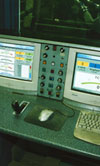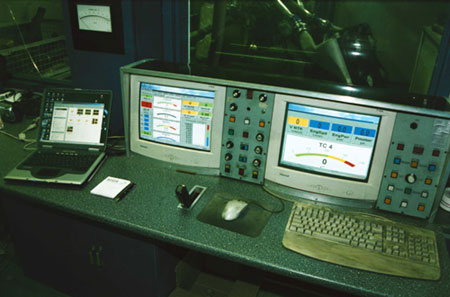'Optimising' the gasoline engine?
 Perhaps the most common word used today in engineering is 'optimise.' Now, my memory may be a little bit selective, but until about 20 years ago the word was rarely used. But I have a theory. In the past, engineers were probably far too busy concentrating on getting things to work in the first place than working to their optimum, or perhaps it's because today's engineering 'tools' - and by that I mean software - are far more discriminating, allowing finer degrees of control. Or perhaps it's a combination of both. Even so, when it comes to engines, 'optimise' is not a word dyno engineers generally use.
Perhaps the most common word used today in engineering is 'optimise.' Now, my memory may be a little bit selective, but until about 20 years ago the word was rarely used. But I have a theory. In the past, engineers were probably far too busy concentrating on getting things to work in the first place than working to their optimum, or perhaps it's because today's engineering 'tools' - and by that I mean software - are far more discriminating, allowing finer degrees of control. Or perhaps it's a combination of both. Even so, when it comes to engines, 'optimise' is not a word dyno engineers generally use.
The word suggests making the best use of what we have. We can therefore optimise the flow of air running through a radiator, making sure the temperature drop is at a maximum for a given amount of air flow, or we can optimise the amount of material in a gearbox casing. In each case we are making maximum use of a limited resource, and I would have hoped that anyone reading this would generally understand the processes involved.
With engine dyno testing, however, it's a different ball game. To optimise an engine can mean a number of things - do we want best power, best fuel economy or even best power to weight, say? While the dyno engineer doesn't ordinarily get a look-in at this last example, he tends to focus his skills very much on the other two, and because of this his vocabulary changes.
So instead of using 'optimise' our dyno engineer might use MBT, WMMP or even LBT. In some cases he may use RMMP or RBT, but before we consign him to the sanatorium or that place where all dyno engineers eventually go - home perhaps (?) - let me explain.
MBT stands for Minimum (ignition) Advance for Best Torque whereas WMMP stands for Weakest Mixture for Maximum Power, sometimes referred to as LBT (Leanest mixture for Best Torque). MBT is obtained by placing the dyno in 'speed' control mode and the throttle in 'position' mode, and with a wide open throttle, altering the ignition advance at an air:fuel ratio to give maximum performance. This ratio is typically about 12:1 for standard gasoline.

Exact practices will vary from tester to tester, but with his eyes glued to the torque output gauge and a well-calibrated ear to listen out for 'knock', the ignition will be advanced in 2 (crank) degree steps. Continually correcting any fuelling drift, once maximum torque has been reached and the power doesn't rise any further, then backing off 1º will give an approximation to MBT.
Another way, and one that is slightly less subjective is to increase the ignition advance until power drops off by 1%. Retarding again through peak torque until the power drops off on the other side by 1%, the MBT point is roughly half way. Should the engine start 'knocking' at any point, the ignition may need to be retarded quickly by several degrees if the engine is not to be damaged. Sometimes, however, occasional' knock' can be tolerated.
WMMP or LBT are simply variations on the same theme but instead of outright power, fuel flow will be targeted. WMMP/LBT are most often sought at part throttle since running gasoline engines lean at wide open throttle can risk detonation damage.
So 'optimise' is a term rarely spoken by dyno engineers but if they talk continually about MBT or WMMP, just cut them some slack.
Fig. 1 - The dyno tester's office
Written by John Coxon